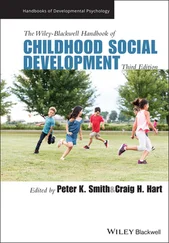In [63], the authors use ML techniques to learn implicit performance models from real-world measurements. The techniques do not need to know the details of interacting parameters. The authors used the developed model for channel allocation and power control.
2.7.2.4 Latency Estimation and Frame Length Selection
Latency is a key factor that impacts the performance of modern mobile applications. In [64], the authors found that, latency depends on three main parameters: Channel utilization, the number of online devices, and the SNR. WiFi latency can be modeled using these related factors. The authors developed and compared the performance of supervised ML-based algorithms used to measure, characterize, and predict delay in large-scale WLANs. Training is implemented using data sets obtained from field measurements.
Selecting a proper frame length is an important issue in WLANs, where it impacts the performance and users’ QoE in the network. The selection problem requires advanced techniques able to utilize information on practical settings in real-time.
The work in [65] proposes an SDN-based solution for frame length selection in WLANs. The system proposes inclusion of ML techniques in SD-WLANs to optimize the selection of frame length for each user based on channel conditions as well as overall performance indicators. The supervised learning approach is used, where the algorithm is deployed on the management plane of the SDN architecture. The CP periodically feeds the algorithm with network knowledge about channel conditions and users’ state.
The research work of [66] proposes a ML-based approach for the implementation of QoS management model in wireless networks. The ML system uses both supervised and unsupervised algorithms to identify key quality indicators for network users which represent an estimation of the quality as perceived by users considering influencing factors. Also, the ML concept is used for providing information about areas where corrective actions are required.
Transparent handover with minimum overhead is still an open issue in WLANs. Though the 802.11r standard developed protocols that help implementing seamless handover between WLAN cells, still APs and users need to be highly engaged in the handover process. This impacts the performance of APs, especially in dense deployments; wherein handover rate is expected to be high. With the advancement in AI and ML; coupled with the evolving SDN technology, researchers are trying to develop methods that allow low cost and successful transparent mobility among WLAN cells.
An example effort is published in [67], where the authors developed an SDN-based solution for controlling and managing handover in WLANs. The proposed solution allows the devices to seamlessly move across cells without losing the QoS level.
The researchers in [68] developed a framework to optimize the handover process and balance the network throughput and handover rate. Unsupervised ML algorithm is used to classify users according to their mobility patterns. Then, deep RL is used to optimize the handover process in each cluster. The received signal power by the user from APs is used as the state vector. The reward is considered to be the weighted sum between the handover rate and the throughput.
In [67], the authors developed and tested an SDN-based solution for providing seamless handover in WLANs based on virtual APs. The solution maintains QoS requirements of real time applications in terms of packet loss and delay.
2.7.3 Cognitive Radio Networks
Currently, ML-based spectrum sensing techniques are proposed. The existence of PUs is determined through two phases. In the first, signal features are extracted employing one of the spectrum sensing methods. In the second phase, decisions are made about PUs’ activity by applying ML algorithms. The authors of [68] used the energy detection approach to extract signal features which were used to train the K-mean-based ML model, whereas [69] proposes a probability vector as features of ML method. Probability vector has shown superior performance, whereby it alleviates the dimension of the feature vector and, hence, reduces the time duration of the ML model. In [70], the authors propose to use the eigenvalues/eigenvector as features, whereby these features are derived from constructing covariance matrix samples from different SUs’ signals. The authors of [71] derived the eigenvalues/eigenvector features by applying principle component analysis of the signal samples. Based on information geometry theory and application, the work in [72] innovate novel features by measuring the distance between two probability distributions on a statistical manifold. The research efforts in [73–76] focus on finding the circularly characteristics that help in differentiating between the transmitted and noise signals. In their models published in [77, 78], the authors study the case where SUs catch more than one PU signals, whereas [79] investigated the mobility issue of CR systems.
1. Gacanin, H. and Ligata, A., Wi-fi self-organizing networks: Challenges and use cases. IEEE Commun. Mag ., IEEE, 55, 7, 158–164, 2017.
2. Lohmüller, S., Cognitive Self-Organizing Network Management for Automated Configuration of Self-Optimization SON, in: PhD. Dissertation , University of Augsburg, 2019.
3. Thomas, R., DaSilva, L., MacKenzie, A., Cognitive Networks (book chapter), in: Cognitive Radio, Software Defined Radio, and Adaptive Wireless Systems , Springer, Germany, 2007.
4. Thang, V.V. and Pashchenko, F.F., Multistage System-Based Machine Learning Techniques for Intrusion Detection in WiFi Network. J. Comput. Networks and Commun ., vol. 2019, Article ID 4708201, 13 pages, 2019. https://doi.org/10.1155/2019/4708201.
5. Mitchell, T., Machine Learning, McGraw Hill series in computer science , Mc- Graw-Hill, USA, 1997.
6. Liu, Y., Bi, S., Shi, Z., Hanzo, L., When Machine Learning Meets Big: A Wireless Communication Perspective. IEEE Veh. Technol. Mag ., IEEE, 15, 63–72, 2020.
7. Kaufman, L. and Rousseeuw, P., Finding Groups in Data: An Introduction to Cluster Analysis , JohnWiley & Sons, US, 2018.
8. Andrews, J., Buzzi, S., Choi, W., Hanly, S., Lozano, A., Soong, A., Zhang, J., What will 5G be? IEEE J. Sel. Areas Commun ., 32, 1065–1082, 2014. IEEE.
9. Agarwal, S., Kodialam, M., Lakshman, T., Traffic engineering in software defined networks. Proc. IEEE INFOCOM , pp. 2211–2219, 2013.
10. Mestres, A., Rodriguez-Natal, A., Carner, J., Barlet-Ros, P., Alarcón, E., Solé, M., Muntés-Mulero, V., Meyer, D., Barkai, S., Hibbett, M., Knowledge defined networking. ACM SIGCOMM Computer Communication Review , vol. 47, pp. 2–10, 2017.
11. Lim, S., Software Defined Network Detection System. Int. J. Recent Technol. Eng. (IJRTE) , 8, 1391–1395, 2019.
12. Lin, P., Bi, J., Wolff, S., A west-east bridge based SDN inter-domain testbed. IEEE Commun. Mag ., 53, 2, 190–197, 2015.
13. Xie, J., Yu, F., Huang, T., Xie, R., Liu, J., Wangz, C., Liu, Y., A Survey of Machine Learning Techniques Applied to Software Defined Networking (SDN): Research Issues and Challenges. IEEE Commun. Surv. Tutorials , 21, 393–430, 2019.
14. Elkhodr, M., Hassan, Q., Shahrestani, S., Networks of the Future: Architectures, Technologies, and Implementations , CRC Press Taylor & Francis Group, USA, 2018.
15. Kosmidesa, P., Adamopouloua, E., Demestichasa, K., Anagnostoua, M., Rouskasb, A., On Intelligent Base Station Activation for Next Generation Wireless Networks. The 6th International Conference on Emerging Ubiquitous Systems and Pervasive Networks , Elsevier, 2015.
Читать дальше












